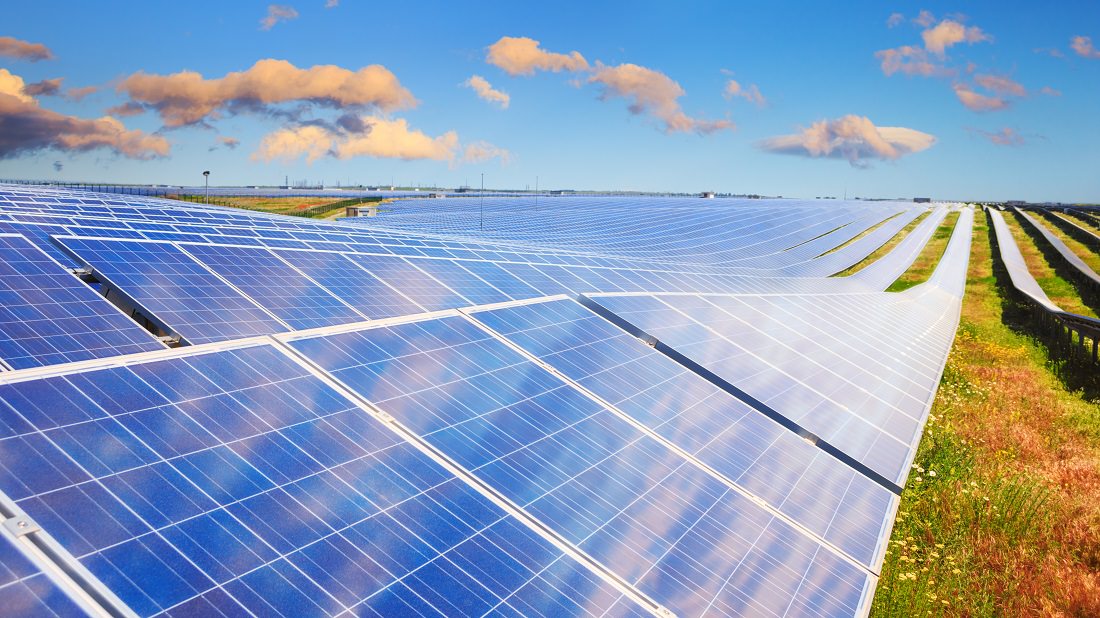
There is now enough installed solar energy capacity in the U.S. to power 13.5 million homes, and this amount is expected to double in the next five years. The solar energy industry is part of a very dynamic market. Many factors — including government policies, fossil fuel costs, solar energy technology advances, commodity prices, and even public awareness of the climate crisis — impact solar energy deployment across the globe.
What’s in store for the next year? Let’s explore some trends in solar energy to better understand what is on tap for 2020.
Solar Battery Prices Are Falling
Solar energy is an intermittent energy source. This means that solar panels produce power when the sun is shining and not when it isn’t. Energy storage allows the solar system to supply power when the sun has set or in cloudy weather, expanding the capabilities of solar energy systems.
There are two main types of solar batteries: lead-acid batteries (like you have in your car) and lithium-ion batteries. The latter is far more advanced, longer-lasting, and requires less maintenance. Not surprising, lithium-ion batteries have a higher upfront cost, but the price has been decreasing significantly in recent years. The cost of lithium-ion battery storage fell 35 percent from the first half of 2018 to now (December 2019) and 76 percent since 2012. This downward price trend is good news for renewable solar energy in 2020 — and it’s likely to continue.
Natural gas plants are often used to meet peak energy loads because they can more easily be turned on and off than coal or nuclear power plants. Lower costs make it easier for intermittent renewable energy sources — such as wind and solar — to be cost-competitive with dispatchable fossil-fired power plants. Price decreases in utility-scale battery banks now make solar plus energy storage competitive in many areas on price alone. Battery banks can make it unnecessary to fire up power plants during times of peak demand, reducing fossil fuel consumption. The greater the capabilities of solar, the less attractive and financially viable these peaker power plants become.
On the residential side, more homeowners are relying on solar systems with battery storage for emergency power during grid outages than ever before. This is an especially attractive option in areas prone to extended power outages due to natural disasters or with inadequate utility infrastructure, like Puerto Rico.
Federal Solar Tax Credit Starts Decreasing
A tax credit is a dollar-for-dollar decrease in taxes owed to the federal government. A tax credit is more valuable to the taxpayer than a write-off. The solar Investment Tax Credit (ITC) is a valuable incentive by the federal government that reduces the total cost of going solar. The solar credit was not extended by Congress, so it will be tapering down each year, starting in 2020. This means that the incentive will be greater in 2020 than in subsequent years.
Currently, the credit is set at 30 percent, but starting in 2020, the solar ITC will be worth 26 percent of the total solar system cost including installation. In 2020, a $10,000 solar system will qualify for a $2,600 tax credit. In 2021, the same system will qualify for a $2,200 tax credit. The solar ITC will continue to decrease “indefinitely to 10% for commercial and utility solar projects, and zero for residential.”
Electric Vehicles Boost Electricity Demand
Surprisingly, electricity demand in most advanced economies has leveled or even decreased in recent years. However, global electric vehicle sales are expected to reach 11 million units in 2020 and then surge to 97 million vehicles in 2025. And these vehicles require electricity to power them.
According to the National Renewable Energy Labs, electric vehicles could cause a 38 percent increase in U.S. electricity demand. An increase in peak energy demand will create a shift in the energy market, boosting the demand for new power generation. Renewable energy sources, like solar, may help meet that demand. Because many electric vehicle owners are eco-minded, many are installing solar systems so their cars can run off of 100 percent renewable energy. In fact, many solar installation companies also install electric vehicle chargers and this trend is growing.
Demand for Solar With Battery Storage Increases
Solar systems with energy storage are surging in popularity for a few reasons. The cost of solar batteries is decreasing, meanwhile, the prevalence of grid outages has climbed. There was a 30 percent increase in grid outages between 2009 and 2019, with a total of 37 million people affected in 2019. Blackouts can cause property damage, including frozen pipes and flooded basements.
Hundreds of thousands of customers lost power in Wisconsin and Dallas County in 2019 due to severe thunderstorms, resulting in millions of dollars of damage. In California, intentional blackouts have been utilized to prevent wildfires.
“While California has always led the country in solar deployment, the drivers behind that growth have shifted,” said Austin Perea, a senior solar analyst for Wood Mackenzie. “This is primarily due to new-build solar demand and increased consumer interest in solar + storage solutions as a result of public safety power shutoffs that have left hundreds of thousands of utility customers in the dark.”
We look forward to discovering new solar energy trends that surface in 2020.
You Might Also Like…
2019-12-24 09:55:00Z
https://earth911.com/eco-watch/energy/4-trends-in-solar-energy-for-2020/
52780516024116
No comments:
Post a Comment